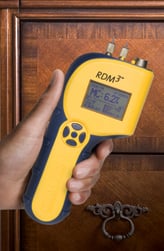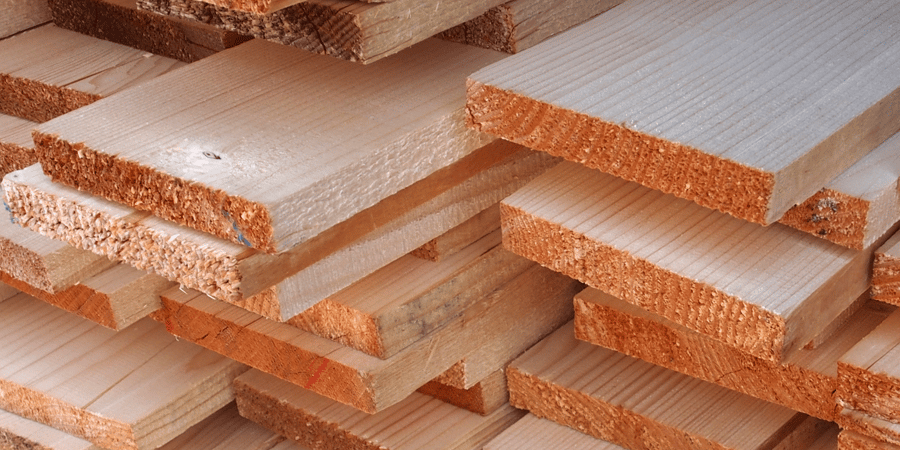10 Reasons Why Woodworkers Should Always Use a Moisture Meter

Whenever you’re working with wood, whether you’re selling furniture, construction lumber, flooring planks, or even firewood, moisture is a constant concern. For any woodworking expert, a moisture meter is an indispensable tool for a number of reasons.
“What are the reasons a woodworker should always carry and use a moisture meter for their work?” you ask? We’ve assembled a top 10 list to answer that question:
Reason #1: To Improve Efficiency
Before the invention of the moisture meter, woodworkers would have to “eyeball” their products to determine if they were sufficiently dry for use, or use an oven dry test, which is time consuming and inconvenient. Both processes took time, and there was a large margin of error with purely visual inspections, and if the woodworker was ever in doubt as to whether or not the wood was ready for use, they’d have to wait for a few more days to make sure the wood was acclimated.
Thanks to the invention of the moisture meter, however, a woodworker can know for certain if their lumber is dry enough for use or not in a couple of minutes, saving time. In fact, a pinless moisture meter can be used to take readings from numerous wooden boards with incredible speed.
Reason #2: For Accurate, Reliable Moisture Readings
Another benefit of using a moisture meter is that it provides a much more reliable measurement of the %MC of wood than a simple, naked-eye inspection of the lumber’s surface can. Wood that is dry to the touch on the surface can still be holding moisture deep within itself.
Using a moisture meter provides the ability to find moisture pockets that are hidden from the human eye.
Reason #3: For Quality Control
One of the biggest reasons why experienced woodworkers use moisture meters is to ensure that their products conform to their own high standards of quality. Without a moisture meter, there is no reliable way to be certain that the wood they use in their products will not succumb to moisture-related problems further down the line.
Using a moisture meter allows woodworkers to assemble and ship out their wood products with confidence, knowing that the moisture content is just right.
Reason #4: To Protect Their Reputation
Beyond making quality control of lumber-based products easy, moisture meters help protect the good names of the woodworkers who use them. By using moisture meters to detect problematic moisture pockets in their products, woodworkers can avoid risking their reputations on inherently faulty materials.
Reason #5: To Avoid Catastrophic Failures
Why would a compromised piece of wood be of such concern to a woodworker? Because, moisture-damaged wood can be more than unsightly, it can actually be dangerous in certain situations.
For example, let’s say that a woodworker specializes in making large wooden tables. However, this woodworker doesn’t use a moisture meter for whatever reason, and the wood used for one table ends up having too much moisture, and it begins to rot during shipping. Not enough to be obvious, but just enough to cause the fibers of the wood to begin separating, severely weakening it. Sure enough, that table makes it to the sales floor, and falls apart the first time anyone puts a significant amount of weight on it, such as a large ham roast or even someone leaning on the tabletop.
It’s an embarrassing situation, to say the least. Using a moisture meter can help identify moisture pockets in materials that could prove to be a problem later, allowing woodworkers to either remediate the problem right away, or at least avoid using the moisture-compromised wood.
Reason #6: To Prevent Mold
Mold loves a damp, cool environment. While kiln-drying is designed to heat wood to leech out moisture and prevent problems such as mold, not every piece of lumber in the kiln is always moisture-free after a normal kiln-drying cycle. Without a moisture meter to verify that the lumber has the appropriate moisture content and is ready for storage or shipping, a moisture-rich piece of wood could slip past unnoticed.
Over time, mold can begin to grow on or inside the affected piece of lumber, and even spread to nearby pieces of lumber, ruining a whole load.
Reason #7: To Save Money
When moisture problems in the wood being used for a woodworker’s products cause the product to be ruined, not only is the woodworker out for the cost of the materials that went into that product, they’re out for their own time and labor spent on making that item as well.
Testing wood prior to using it for the manufacture of furniture or other wooden products allows woodworkers to avoid wasting material and time on building an item that will have to be scrapped, providing monetary savings in the long run.
Reason #8: To Establish Their Reliability to Buyers
Rather than protecting their already-good name, some woodworkers use high-end moisture meters as a way of establishing and maintaining a good name for their business. Being able to say that your lumber has been tested with the latest, most accurate and dependable moisture meters on the market can go a long way towards proving that your quality-control process is top-notch and making buyers feel more comfortable making purchases from a new supplier.
Reason #9: To Verify Acclimation Conditions for Lumber
Before shipping lumber-based products out to other regions of the country, it is necessary to make sure that the lumber is properly acclimated to the moisture conditions of that region. For most of the USA, this means that the lumber should have a moisture content of 6%-8%, and be acclimated to 40%-45% relative humidity.
When woodworkers need to make sure that the conditions that their lumber is being acclimatized to are correct, they use thermo-hygrometers to ensure that the temperature and relative humidity are just right.
Reason #10: Documentation of Processes
 Some moisture meters can actually store digital readings to be recalled later. Using this handy feature, a woodworker can document their quality control process with date and time stamps to prove that not only did they take moisture readings, but what those readings were and whether or not they indicated a potential problem.
Some moisture meters can actually store digital readings to be recalled later. Using this handy feature, a woodworker can document their quality control process with date and time stamps to prove that not only did they take moisture readings, but what those readings were and whether or not they indicated a potential problem.
Hopefully, a woodworker will never have to deal with a situation where such documentation will prove necessary. But, as the old saying goes, “it’s better to have it, and not need it, than to need it, and not have it.” Thorough record-keeping of moisture readings can help a woodworker prove that a moisture-related problem occurred as a result of exposure to moisture at the user’s end than as a result of moisture trapped in the wood during the initial build.
With their professional reputations and livelihoods riding on the quality of their products, the best woodworkers depend on quality moisture meters in their work.
Subscribe to Our Blog
Post Related

Moisture Meters for Wood: Your Complete Guide

